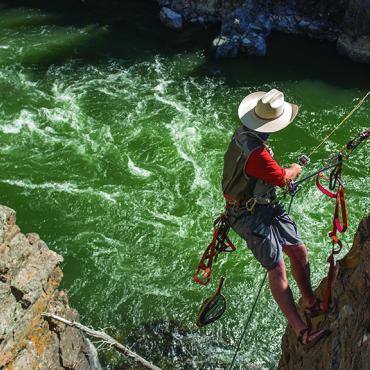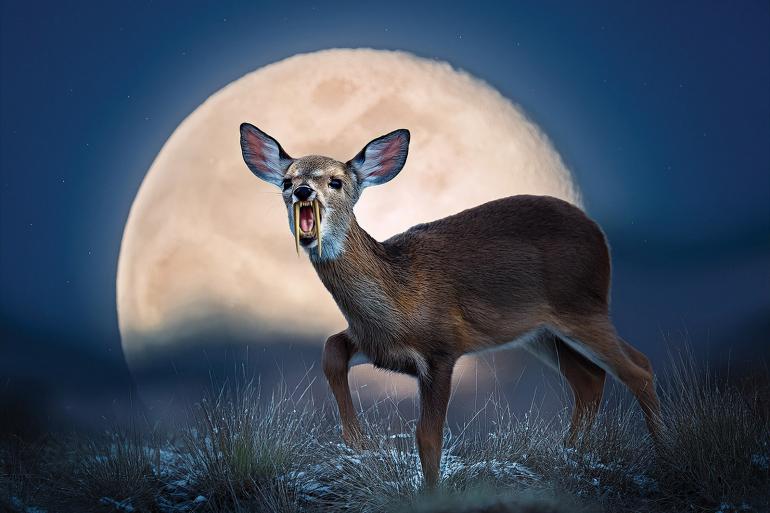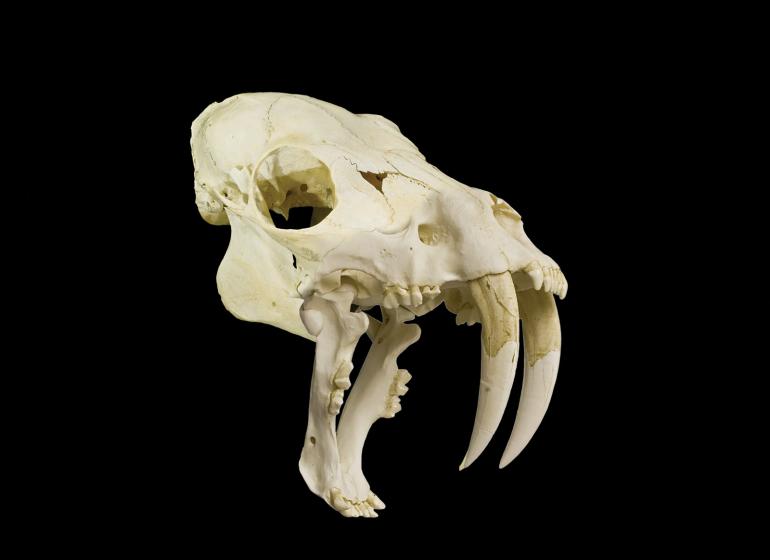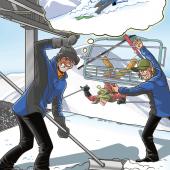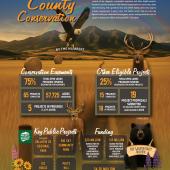Oh, Deer!
Montana's newest nuisance.
Move over, zebra mussels, there’s a new menace in Montana—but it doesn’t hide on hulls and infest waterways. No, this invasive species roams the mountains high above, eating nutrient-rich grasses that support our elk and mule-deer herds. It’s called the Himalayan musk deer, and its small stature and nocturnal nature make it difficult to find, let alone kill. And its numbers are growing—fast.
Like the infamous “bucket biology” that put non-native lake trout, pike, and other harmful fish into our waters, the musk deer was illegally introduced in 2015 by Seymour Ivery, a retired Bozeman dentist, part-time taxidermist, and goat enthusiast. During a trek to Everest Base Camp, Ivery spotted a musk deer grazing nearby. Intrigued by its diminutive size and large canine teeth, he arranged for local Sherpas to smuggle a small herd back to Montana, offering dental work as payment.
“The Sherpas’ diet—consisting primarily of Vietnamese cigarettes, yak milk, and sugary energy goo supplied by their clients—coupled with the difficulty of procuring toothbrushes in the mountains of Nepal, wreaks havoc on their oral hygiene,” wrote Ivery in an email to his wife. “I only shaved 20% off my standard rate, and still they were more than happy to oblige.” Standing less than two feet at the shoulder, and bedecked with emotional-support vests and leashes, the musk deer passed easily through airport security. The smooth transfer was facilitated by the handlers themselves, who charmed the customs agents with polite demeanors and winning smiles.
Fish & Game has issued a state of emergency, asking all citizens to help neutralize the threat and promising a $20 bounty for each confirmed kill, similar to Louisiana’s policy for nutria.
Fast-forward 10 years, and the Montana musk-deer population has reached dangerous proportions. Ivery, from his cell in Warm Springs, explained his impulsive act: “Taxidermy’s always been my real passion, but the business was struggling. When I saw those teeth, I saw an opportunity to carve out a niche for myself. The first few full-body mounts were rough—my wife mistook them for Mexican street dogs, and she tried to get me committed. But once I switched to European mounts and the money started rolling in, she agreed to semi-weekly counseling sessions. That was until the bastards at FWP caught on and committed me anyway. I should’ve known that guy was an undercover warden. Stupid, stupid, stupid!” Ivery exclaimed, while bashing his head against the padded wall.
Now, what range ecologists have dubbed “feral pigs with fangs” are taking over native-ungulate habitat at an alarming rate. “Before these little hell-spawn appeared, people thought that the wolf reintroduction was bad. But compared to these Nosferatu-deer, the wolves look like guardian angels for elk,” said Fish & Game spokesman, Jacob Van Morgansing. The agency has issued a state of emergency, asking all citizens to help neutralize the threat and promising a $20 bounty for each confirmed kill, similar to Louisiana’s policy for nutria. “If you see one, wax its ass immediately,” said Morganson, “by any means necessary. Rocks, guns, knives—hell, hit it with your truck. Just bring us the teeth, and make sure it’s a musk deer, not your neighbor’s buck-toothed Australian shepherd.”
Not everyone agrees with the extermination efforts, however. Belle Acossity says musk-deer hunting changed her life. “I’ve never been good at bugling, cow-calling, or grunting like a whitetail buck,” she explained. “But I can snarl with the best of ’em. Brings those little bastards right in.” Accosity says her freezer is always full nowadays, and she’s never enjoyed such high confidence and self-esteem. “I was so proud of my first kill, I used the skull as a hood ornament,” she said. “I don’t even use my turn signals anymore. No one would dare honk at me now!”
“Before these little hell-spawn appeared, people thought that the wolf reintroduction was bad. But compared to these Nosferatu-deer, the wolves look like guardian angels for elk." —Jacob Van Morgansing, Fish & Game spokesman
Lee Thargic, a recent transplant from Texas, also likes having the animals around. “The elk and deer ’round here are just too darn big,” he said. “I got me a thyroid problem, and I love pizza. And beer. And Texas—praise God. Anyways, I can barely walk through the woods, let alone pack out an 80-pound hindquarter. But those little muskies? I throw ’em over my shoulder right quick, hoof it back to my F-350 for cold beer & Slim Jims, and still get back in time to watch the Longhorns whoop the Aggies. You can’t beat that with a stick!”
Hunter enthusiasm aside, FWP encourages caution. “This isn’t just an ecological concern,” explained Van Morgansing. “We have to consider safety, too. What if one of those little hooved vampires attacked someone? Their fangs could rip out a jugular. Or worse—their small stature makes the groin a likely point of attack. Do you want to get castrated by an Asian chupacabra? I know I don’t.”
To learn more, visit montanamuskdeer.com.


